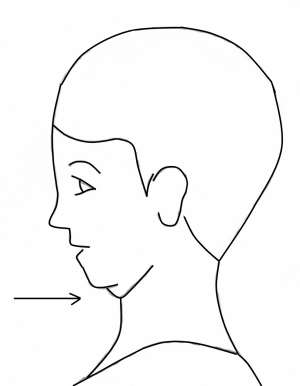

Meanwhile, one of the suggested interventions for improving musculoskeletal disorders is exercise therapy that includes a large variety of methods such as mobilizing, stretching, isometric/static or dynamic strengthening, endurance training, direction-movement control and proprioceptive exercises. ĭespite the fact that neck disorders are common in the population, little evidence supporting effective interventions has been identified. The difference was considered statistically not clinically meaningful. (2008) indicated that those with chronic non-traumatic neck pain have more FHP in standing position than pain-free participants. (2014) stated that FHP and thoracic kyphosis are associated with neck pain although they did not find any relationship between RSP and neck pain in Iranian office workers. Ĭhanges have been shown in head, shoulder and thoracic posture in people with neck pain compared to asymptomatic ones. Therefore, FHRSP has to be modified to decrease stress on the shoulder. įorward head and round-shoulder postures (FHRSP) can result in shoulder pain and dysfunction because of altered scapular kinematics and muscle activity and consequently, placing increased stress on the shoulder. On the other hand, in round shoulder posture (RSP), there is acromion forward displacement in relation to the 7th cervical spinous process and can be measured by the shoulder angle associated with a protracted, anteriorly tilted, internally rotated scapula and the pectoralis minor muscles shortness. Suboccipital, Semispinalis, and splenius), Sternocleidomastoids and the Levator scapulae muscles has been observed. In FHP, hyperextension of the upper cervical spine associated with shortening of the upper trapezius, cervical extensor muscles (e.g. Poor posture is also associated with altered scapula position in terms of kinematic and muscle activities. Some people may benefit from performing the stretch even more often or when neck tightness first starts to develop.Forward head posture (FHP) is a kind of poor posture associated with increased kyphosis in the thoracic spine and anterior shoulder position. Most recommendations are to perform this stretch a few times per day, such as in the morning and in the afternoon. View Slideshow: 4 Easy Stretches for Neck and Shoulder Pain Hold for 30 to 60 seconds, or as tolerated.To increase the stretch further, the left hand can be brought up to the back of the head to gently pull down a little more.Tilt the chin downward until a good stretch is felt on the back right side of the neck.While keeping everything else still, rotate the head to the left about 45 degrees (which is about halfway toward the shoulder).If raising the elbow above the shoulder is too complicated at first, this step can be skipped.)

(This step rotates the shoulder blade downward, which helps lengthen the levator scapulae muscle even more before it is stretched.

Here is a version of the levator scapulae stretch that can be performed while seated: Step-by-Step Guide for the Levator Scapulae Stretch


 0 kommentar(er)
0 kommentar(er)
